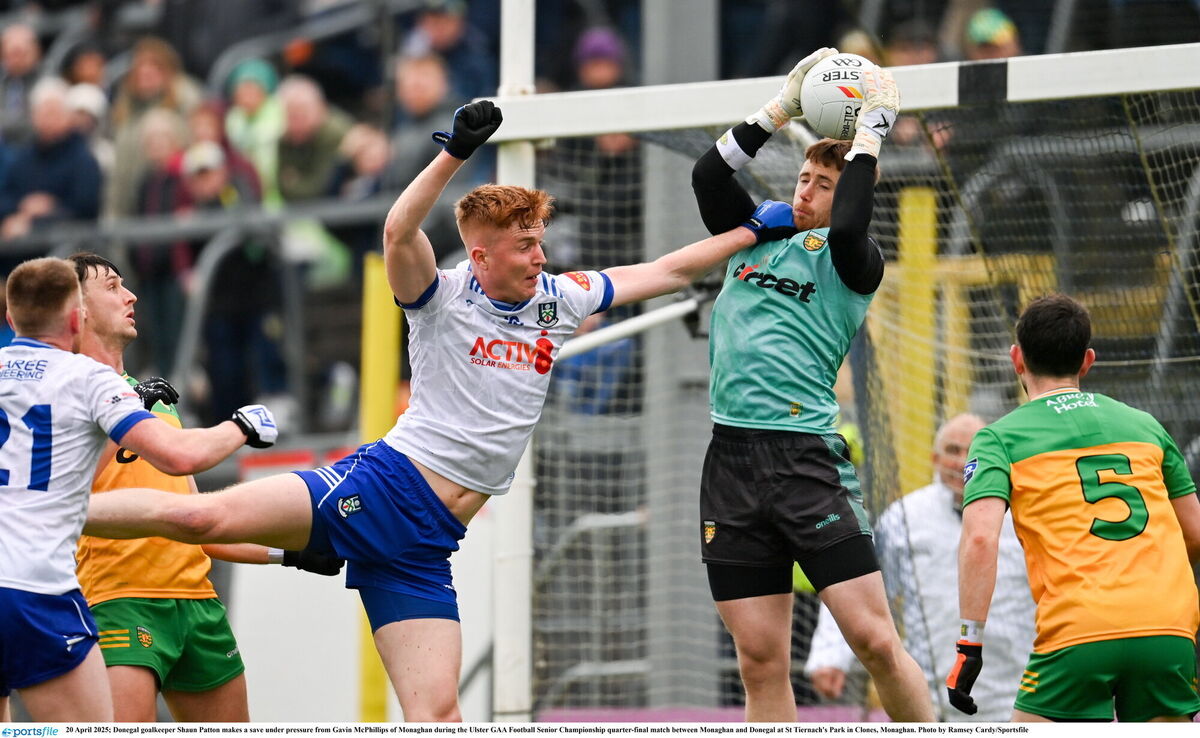Eight becomes four as All-Ireland SFC steps up a gear

Barry McCambridge of Armagh celebrates his goal against Kerry in last year's All-Ireland SFC semi-final at Croke Park. Picture: Seb Daly/Sportsfile
Twenty-five years ago, in the last football season before the introduction of the ‘back door’ of the All-Ireland qualifiers, there were 13 counties still involved in championship action. However, it took until October 7 for the campaign to be completed, albeit with the need for an All-Ireland football final replay between Kerry and Galway.
This morning, there are ten counties still holding aspirations of glory – eight in the All-Ireland SFC and the Tailteann Cup finalists, Kildare and Limerick – though by the end of the weekend there will be just four in the hunt for the Sam Maguire, with July 27 marking the end of the championship.
For anyone who grew up with the idea of the second and fourth Sundays in September as the key days in the GAA calendar, the new reality still remains a culture-shock, perhaps in part due to how quickly things changed, something exacerbated by Covid-19. At the same time, it’s probably not outlandish to suggest that some of the emotional attachment is based on memories where every game was a cracker, played in lovely sunshine.
Logic might say that there is a midpoint somewhere between late July and late September that would work as a compromise for most stakeholders, but of course the vast silent majority of club players deserve clarity around their championships. And, given that the inter-county season starts in January, is seven months really that compacted a timeframe or is it that the pacing within that period could be modified?

Ultimately, these are matters for the ‘quiet’ time of the year, when changes are made and not noticed by the vast majority, until they come into effect the next year, accompanied by all manner of misgivings.
What can be said is that the raft of adjustments made to the playing rules for 2025 have had a positive effect and that has been reflected in the levels of attendance and general interest.
Which four will be standing by Sunday evening? All-Ireland champions Armagh look to be the general fancies, especially after topping a group featuring Dublin, Galway and Derry with a game to spare, but their clash with Kerry can obviously not be taken for granted.
In last year’s semi-final, the Orchard County looked beaten until they produced a rousing comeback before winning in extra time. Kerry haven’t really hit the heights since, with a defeat to Meath in their last group match worrisome because it meant they didn’t top their group.
Jack O’Connor’s side might benefit from the ‘Croke Park effect’, and they fact they’re coming in off a win over Cavan whereas Armagh lost their last match to Galway. More than once in the past, the Kingdom have come into a big clash like this with question-marks only to use the occasion to turn the season irrevocably their way. The current side may not be at the levels of previous O’Connor incarnations just yet, but you never know.
While Monaghan topped their group and Donegal came second in theirs, the sections were not of equal quality and the Ulster champions will be favourites to prevail. Tyrone finished top of that Donegal/Mayo/Cavan group and will provide a stern test for a Dublin side that has lost twice already.
The Dubs are of course the only Leinster side to reach the All-Ireland semi-finals since 2011 but that could change if Meath were to beat Galway. It’ll be a tall order for the Royals but, having beaten Kerry, they have no reason to fear anyone else.







 App?
App?







